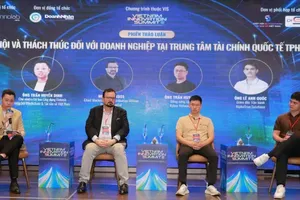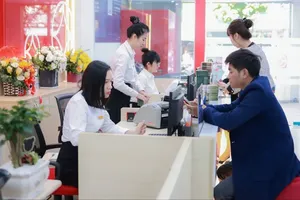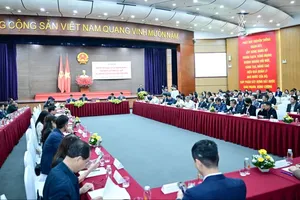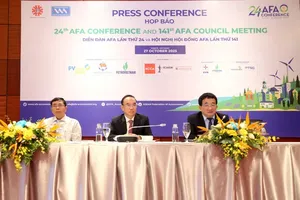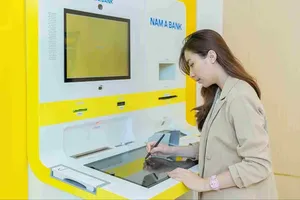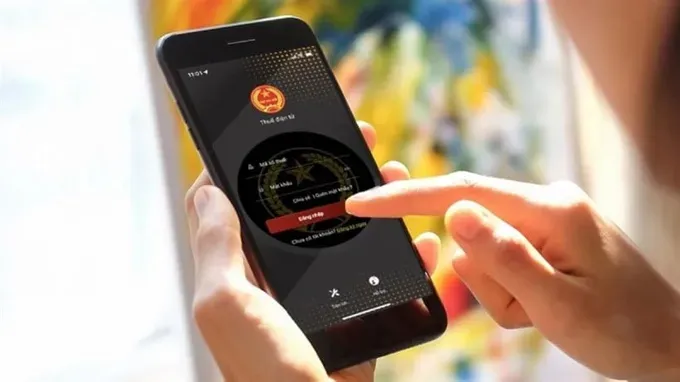
As the deadline to phase out the flat tax system approaches, many small business owners remain anxious about the perceived complexity and cost of switching to the declaration-based tax method. To address these concerns, the Ministry of Finance has approved an implementation plan, and tax authorities have issued detailed guidance to ensure a smooth transition.
Technology reshapes old habits
In less than three months, more than five million household businesses will shift from paying fixed taxes to declaring and filing taxes based on actual income. The tax authority is racing to communicate and train small traders to minimize confusion and avoid penalties. However, many remain worried that electronic invoicing and digital tax reporting may be complicated or expensive.
Owner Nguyen Thi Hoa of a flower and ornamental plant shop in Hanoi’s Thanh Trì Ward shared that her biggest challenge with e-invoices generated from cash registers lies in inputting invoices. She complained that most flower growers are small-scale and unaccustomed to issuing invoices. When full documentation is required, many have to buy invoices from intermediaries to legitimize their business, adding significant costs.
According to Professor Hoang Van Cuong, Member of the National Assembly’s Economic and Financial Committee, most small traders still operate informally, without systematic accounting records. He noticed that once digital systems are fully connected between businesses and tax authorities, officials can assist traders directly providing reminders, instructions, and even pre-filled forms. This not only simplifies tax compliance but also helps small businesses track profits and manage operations more effectively.
Professor Hoang Van Cuong pointed out that the biggest challenge is not technology but mindset. Many long-time market vendors are hesitant to adopt electronic invoicing or digital tax filing, mainly due to unfamiliarity rather than technical barriers.
In the first nine months of 2025, more than 18,500 business households transitioned from flat-tax to declaration-based methods, while about 2,530 upgraded to enterprise models. Impressively, 98 percent of declarant businesses have filed taxes electronically, and over 133,000 have registered for e-invoices via cash registers showing strong momentum for digital transformation.
Experts see this as a positive sign: once small businesses experience the convenience of tech-enabled tax systems, outdated habits will gradually fade.
Making tax filing easier for everyone
Deputy Director of the General Department of Taxation Mai Son emphasized that the agency understands the concerns of small businesses adapting to the new system. To ease the process, the tax authority now offers free, integrated e-tax services from registration to declaration and payment which is accessible anytime, anywhere via smartphones or computers.
By late 2025, the tax sector plans to upgrade its eTax Mobile platform and related applications, creating a smart digital tax ecosystem for individual and household businesses. The system will automatically generate revenue and tax estimates based on available data such as e-invoices and tax registration records. Small businesses will simply need to review and confirm their information.
This constitutes a reformative step designed to create the utmost convenience, simplifying and streamlining tax declaration, while minimizing errors and time spent for business households. Significantly, effective invoice issuance not only clarifies revenue and expenses but also helps to prove the origin of goods to the market management authority.
In fact, the tax authority has made thorough preparations for the abolishment of the lump-sum tax over the past period. At a recent conference evaluating tax administration for business households and implementing e-invoices generated from cash registers, the leadership of the Tax Department directed provincial and municipal tax agencies to continue vigorously implementing the use of e-invoices generated from cash registers as regulated for business households and individual businesses. This includes intensified supervision and encouragement for business households to use invoices to form a habit of issuing e-invoices upon selling goods or providing services, thereby creating a prerequisite for tax administration of business households when the lump-sum tax is eliminated from 2026.
Notably, the Ministry of Finance yesterday issued Decision 3389/QD-BTC approving the Project on Transforming the Model and Method of Tax Administration for Business Households upon the Abolishment of Lump-Sum Tax. The project aims to ensure that business households apply the self-declaration and self-payment method of taxation starting from January 1, 2026.

Concurrently, it aims to simplify processes, reduce the time for processing administrative procedures by at least 30 percent, and reduce compliance costs by at least 30 percent while ensuring 100 percent of business households receive support from the tax authority after transitioning to the new declaration method and 100 percent of entities subject to the use of e-invoices generated from cash registers adopt them. A noteworthy content set forth by the project is the goal of developing an automatic tax calculation application.
Accordingly, the tax authority will research and develop a new tax administration model for business households after the abolishment of lump-sum tax, based on grouping them by revenue scale and to enable taxpayers to self-declare and self-pay. Moreover, the tax authority aims to build an automatic tax calculation application using e-invoice data and to develop and provide free or low-cost accounting software for business households and micro-enterprises.
As per the Tax Department, this represents a breakthrough in tax administration, as it simultaneously reduces procedures and human resources for the tax sector, helps taxpayers save costs and time, avoiding complexity, and contributes to increased publicity, transparency, and fairness aligning with international standards.




)
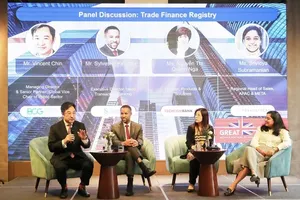
)

